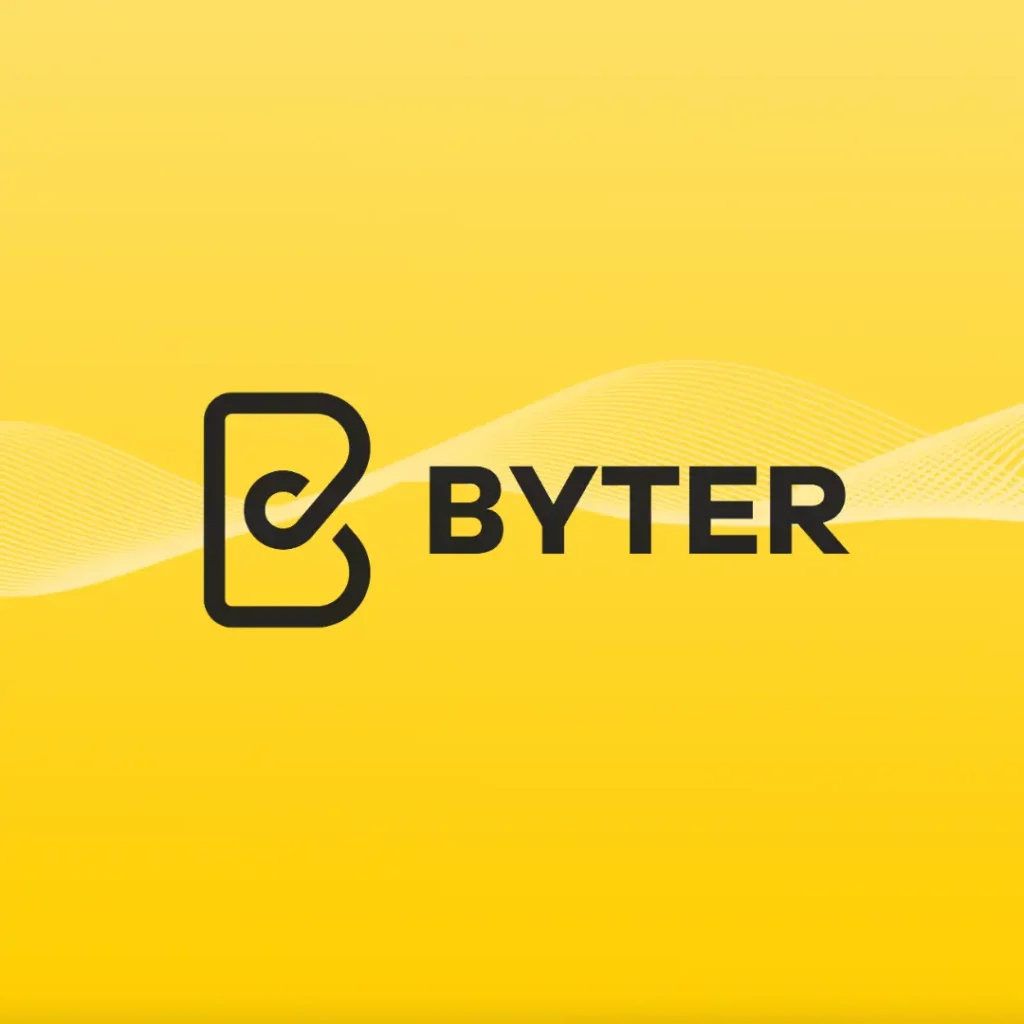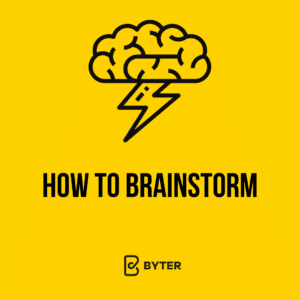15 TECHNIQUES TO GET YOUR CREATIVE JUICES FLOWING
Brainstorming is a creative method for generating innovative ideas, sharing knowledge, and ongoing collaboration to solve problems. It is an intellectual activity, but not solely a group activity.
But how is brainstorming beneficial to us Digital Marketers?
Imagine you are an employee at Apple, and Steve Jobs asks his employees and you to come up with an idea for a new iPhone. How would you come up with this idea? How can you trigger a flow of creativity to stay ahead of your competitors?
Well, this is where brainstorming comes in handy!
Group brainstorming exercises such as: group sketching, brain netting, and wishing allow you to take the pressure off your brain whilst producing a current of creative juices. This can be applied to all walks of business life.
For instance, imagine you are an entrepreneur who is opening a bakery. However, there are already a great deal of bakeries in your area. So, you will need to think about how you can make yourself stand out from the other bakeries.
Because of this, as an entrepreneur you will try out several solo brainstorming techniques in order to spark a creative flame. Like storyboarding, mind mapping, or word banking. These will allow you to come up with unique ideas which you can apply to your business. For example, a cookies and cream flavoured croissant.
Ultimately brainstorming is a way for you all to think freely, stay ahead of your competitors, and keep your creativity in check. Creativity is always important within a business.
Within this guide, I will breakdown 15 brainstorming techniques which will automatically get your creative juices flowing.
Are you ready? Well, let’s begin!
GROUP BRAINSTORMING TECHNIQUES
-
GROUP SKETCHING
Sketching has been proven to activate areas within the brain that enhances creativity, strengthens focus, and strategic thinking.
So I guess you’re wondering, “how can I use group sketching to spark new and fresh ideas?”
Well, that’s simple! Remember, you don’t have to be an artist or a designer to benefit from sketching. Visual thinking generally aids the development of ideas that discussion and writing may not necessarily uncover. Similar to brain-writing, group sketching involves participants building on each other’s ideas.
Let me break this down for you further.
Each member of your team will sketch an image related in a central way to a concept, idea, or topic you want to explore further. Each sketch is then passed to each person, who then sketches another similar image on the same piece of paper. This is repeated multiple times around the group. After this, the final images are reviewed and discussed with the aim of discovering connections that individuals wouldn’t have spotted on their own.
Now it’s your turn! Get your team together, and get creative!
- BRAIN NETTING
Brain Netting is the act of connecting with people electronically to make sure everyone can offer their input and feedback on a project. Essentially this technique helps those people who are working from home, but they still want to participate in creative exercises and idea meetings.
You can get inspired with brain netting too! It doesn’t just have a simple phone call. Company messaging platforms like ‘Slack’ are the perfect way to get everyone into a chatroom to spill their ideas. As ideas are submitted, each chatroom member can vote for their favourites and combine the best qualities of from multiple concepts.
Now it’s your turn! Get connected, and discover your artistic side!
- QUESTIONING ASSUMPTIONS
We all fall into the trap of making those unjustifiable ‘assumptions’. These could be assumptions about what’s possible, what isn’t possible, what people want, what will work, and what won’t.
So, why is it important to question assumptions?
The problem is, sometimes assumptions are wrong and they lead us to take actions and create emotions based on incorrect information. These assumptions could potentially be damaging to your business and brand image. So, this exercise forces us to challenge these assumptions and put everything on the table.
Now I guess you’re wondering, “How does this technique work?”
Draw up a list of all the assumptions you can think of about your current project or business (true or not), and discuss the list as a group. Make sure to question each assumption with your team. Doing this at various stages in your campaign development can trigger innovative ideas, as well as identify knowledge gaps.
-
WISHING
Have you ever heard the term, when pigs fly? Well, that’s exactly what this wishing technique is! You have to ask for the impossible, and the brainstorm ways to make it work.
This technique encourages your team to let imaginations run wild!
So, here how it goes. Ask your team to dream up the most unattainable, extreme, and impractical list of wishes they can think of about your business. Or, a list of solutions to a given problem.
The aim for this activity is to focus on a selection of wishes. Then you need to consider and discuss the ideas in detail, with the aim of triggering new but more realistic concepts to pursue. So think about what makes them so impossible? How the idea can be scaled down? Which features of that wish could we integrate into another approach?
You might be surprised to unravel appropriate, real-world solutions with your team’s wildest wishes.
Now it’s your turn! Wish upon a star my fellow Brainstormers!
- ALTER EGOS/ HEROES
This is a fun exercise which allows you to be someone else for a little while.
Small groups imagine how they would go about solving a given problem if their team were led by a famous character, fictional or real.
For instance, how would Hermione Granger create an SEO plan or go about positioning your brand as a thought leader in virtual reality? Or, what would Steve Jobs do to improve your latest communications package?
These are all the things you can think about through the guise of a character.
But how does this help spark creativity?
Fundamentally, it aids you in thinking outside the box. This is important for producing unique, interesting, and innovative ideas which will blow your competitors out of the water. By temporarily taking on another persona, you are forcing yourself to think in a more abstract way.
You can either choose someone you think embodies the right qualities for the job to help develop your vision, or someone at the opposite end of that scale, to explore less conventional ideas.
Now it’s your turn! Which character will you be?
- SIX THINKING HATS
There’s a whole host of brainstorming techniques and tools which help participants to put themselves into the shoes of another. This particular tool was invented by Edward de Bono, a psychologist, author, and consultant who pioneered the technique in his 1985 book Six Thinking Hats.
The method involves breaking down ideas into six areas of thought:
- Logic: The facts.
- Optimism: The value and the benefits.
- Devil’s Advocate: The difficulties and the dangers.
- Emotion: Feelings and intuitions.
- Creativity: Possibilities and new ideas.
- Management: Making sure that the rules of the hat are observed.
So, how does this Six Thinking Hats technique work?
Well, it’s easy! Have each member of your team put on one of these different “hats” for the discussion. Each “hat” represents a unique set of priorities and perspectives that will help focus your discussion and consider the project from a wide variety of angles.
For example, if you’re wearing the “Devil’s Advocate” hat, it’s your job to consider the project’s or your business’s limitations and challenges. It may feel uncomfortable at first, but the extremes can help your team fully explore a project or different aspects of your business.
Now it’s your turn! You better be ready with your hat in hand!
- FORCED CONNECTIONS
You’re nearly there! This exercise involves bringing together ideas that serve very different needs or interests to form a new concept. You see this sort of thinking all the time in products like: the Apple Watch, the Swiss Army knife, smartphones, or even sofa beds.
But how do these connections form new ideas?
Well that’s simple! By gathering conflicting interests together, you may end up concocting a product or idea which your audience wants and needs.
So how is this activity done?
To put this method into practice, bring a bag of random items to your next meeting or draw up two lists of unrelated items on the board. Ask each person in your team to pick two or more items in the bag or on the list. Now, explore different ways they can be connected. This technique can produce some silly results, but it is ultimately a helpful way of getting your team out of a creative rut.
Now it’s your turn! It’s time for you to get your pick&mix on!
-
BRAIN-WRITING
This one is similar to group sketching. Your team simply need to write down a few rough ideas for solving a particular business issue on a piece of paper. Each piece of paper is then passed onto each person. Then each person reads it silently and adds their own ideas to the piece of paper. This process is repeated until everyone has had a chance to add ideas at least two or three times. The notes are then gathered at the end for discussion.
Brain-writing is beneficial since it makes sure everybody is given the opportunity to have their thoughts and ideas thoroughly considered by the group. This gives everyone the chance to be heard, and their ideas accepted.
Now it’s your turn! Scribble to your heart’s content, and see what ideas spring to mind!
SOLO BRAINSTORMING TECHNIQUES
- STORYBOARDING
If you’re trying to design a process, storyboarding can help you see where your collective understanding of a problem supports or conflicts with a proposed solution. As well as establishing where more thought and research is needed. By visually transforming your chosen narrative, your team will be able to see how ideas interact and connect to form a solution.
But how can storyboarding be beneficial to your business?
Storyboarding is a fantastic technique for team collaboration, visualizing your learning design, and identifying weaknesses. Imagine you are planning a new app, but you want to ensure that you know how to do each step in the long process of creating an app. Storyboarding allows your team to craft a thorough layout that will help your new app run smoothly.
So how does this work?
Take a few minutes to write out your ideas as individual notes. You can use sticky notes! These ideas don’t have to be complete thoughts. For example, physically pinning up quotes, pictures, and user info can help you see new relationships between different components.
Once you have a group of sticky notes to work from, then start arranging them on the board as a progression: first this, then that. Organizing your ideas as a continuous series will help you see new connections and eliminate extraneous material that doesn’t support your overall goal.
Let me break this down a bit further.
WHY THIS BRAINSTORMING TECHNIQUE WORKS?
- Storyboarding allows you to see your ideas in a consecutive pattern.
- You are able to see an overarching overview of a new or current processes without digging too deeply into the details.
- You can start from anywhere! The beginning, middle, or the end. Then you can simply fill in the blanks afterwards.
This is particularly useful for my fellow Digital Marketers when handling marketing campaigns, an internal process, or a marketing videos. Through storyboarding, you can let your marketing journey speak to you.
Now it’s your turn! Bring your storyboarding narrative to life!
- MIND MAPPING
Mind Mapping is a graphical way to represent ideas and concepts. This technique is another visual tool that helps to structure information, analyse better, and generate new ideas.
This is a very beneficial tool for regurgitating all the ideas within your mind. Once you have run out, then this is the time to assess and evaluate the ideas that you have on paper. This is a great way to organise your ideas.
So, how does this technique work?
Write down the task or problem you’re trying to solve at the center of your sheet, notebook, or whiteboard (it is much easier to do this on whiteboard, or in a notebook).
After this, you need to expand on this problem by surrounding it with terms that better describe what you need. For example, if your problem is low website traffic then some terms to write around this phrase could be “organic traffic,” “trusted content,” “SEO,” and “video strategy.”
Once your mind map has this first layer, then add a second layer to each of your needs describing how you might be able to solve these individual challenges. For instance, around “SEO,” you might write “topic clusters,” “dedicated SEO strategist,” and “video marketing course.”
Mind mapping is a fantastic problem-solving technique that fosters creative solutions to subjects which might otherwise seem uninspiring.
WHY THIS BRAINSTORMING TECHNIQUE WORKS?
- Mind mapping allows you to keep an open mind whilst developing structured ideas around a particular topic.
- With mind mapping, you don’t need to have an order in mind. You can prioritize later!
- You can add a myriad of topically relevant ideas as you go. With mind mapping, you never feel boxed-in.
Mind mapping is also a beneficial problem-solving tool for you Digital Marketers! This technique can help you draft content for a website or blog. As well as this, you can come up marketing campaign ideas which are divided by major topics and subtopics.
Here are some mind mapping templates to get you started!
- WORD BANKING
Word banks are a collection of words based on the kind of word from your chosen topic or theme. If you assume “work banking” is a fancy term for “word association,” then you’re right. However, in a word banking session what you do with the words you come up with is much more sophisticated.
Why’s it sophisticated? Well here’s why.
Word banking asks you to form big groups of terms that all describe just a few themes or topics. Creating word banks in a business setting can help you dismantle a project into manageable parts.
Once your word bank is complete, you can immediately form connections between the terms you came up with. Then, you can use those connections to craft ideas that are guaranteed to include all of your most important characteristics.
WHY THIS BRAINSTORMING TECHNIQUE WORKS?
- Word association is a relatively natural, low-effort task — simply begin with a big idea, then begin jotting down anything that comes up for you.
- It doesn’t require you to know the when, why, or how of an idea.
- Word banking will surface gaps in your knowledge. So, if you find yourself stuck then it’s time to do some additional research.
Word banking is also advantageous for Digital Marketers because it is ideal for content projects, and can be a precursor for more in-depth keyword research. As well as this, word banking allows you to regurgitate everything you know about a topic so they can be addressed further.
Furthermore when you are taking on blog posts, word banking can induce “word vomit” which typically encourages ideas without feeling boxed into a formal keyword research process.
-
S.C.A.M.P.E.R.
S.C.A.M.P.E.R. is a process for expanding and improving upon ideas by testing and questioning them from different angles. It is a creative tool for allowing people to think outside the box.
For each letter of the acronym, ask yourself a related question about your project or the problem at hand:
Substitute: What would happen to your project if you swapped X for Y?
Combine: What would happen to your project if you combined X and Y?
Adapt: What changes would you need to be made to adapt this project in a different context?
Modify: What could you change to create more value on this project?
Put to another use: What other uses or applications might your project have?
Eliminate: What could you remove from your project to simplify it?
Reverse: How could you reorganize your project to make it more effective?
This method forces you to approach your project or problem in unexpected ways. Each question asks you to dig a little deeper into the issue and consider new possibilities.
WHY THIS BRAINSTORMING TECHNIQUE WORKS?
- S.C.A.M.P.E.R. will get you to think beyond predefined assumptions about your product or project.
- The series of “would” and “could” questions lets your mind run free with minimal commitment to any actual change or alteration.
- It allows you to improve a process even if you believe the process has reached its optimal form.
S.C.A.M.P.E.R. is also beneficial to Digital marketers! This is because the technique can enhance a current process such as: keyword research or market research. The technique can also optimise the copy of a blog post or marketing campaign.
- S.W.O.T ANALYSIS
Entrepreneurs and business leaders know exactly what a SWOT analysis is. Well, it also happens to be a very helpful brainstorming exercise.
S.W.O.T. stands for Strengths, Weaknesses, Opportunities, and Threats. When launching a company it’s your textbook starting point. A company’s founder might use a SWOT analysis to create his or her business model. However, brainstormers can use the same diagram to better organize their ideas.
Your SWOT analysis doesn’t have to be all that complicated when brainstorming. In fact, it can simply be four columns on a whiteboard or notebook. For instance, when thinking of a new logo design, ask yourself what you like most about your current logo? (strengths). What do you dislike about it? (weaknesses) What should it have more of? (opportunities) What other company logos should you be mindful of? (threats).
WHY THIS BRAINSTORMING TECHNIQUE WORKS?
- A S.W.O.T analysis will effectively put you in problem-solving mode before problems ever arise.
- It takes into account competitive advantages and disadvantages.
- You can get a much more detailed and comprehensive overview of what can be improved.
S.W.O.T analyses are typically used in business and entrepreneurship, but Digital Marketers can use it too. This is because the technique can improve a social or search engine campaign before launch. This means that you can find out where you may have opportunities, or be facing threats.
As well as this S.W.O.T can help you create a much better project plan for clients, and audit an existing process within your team.
- ZERO DRAFT
The Zero Draft is an ideation technique, often used by writers. It is essentially a form of focused free-writing. For marketers and agency professionals, it can help focus the first stages of a new project by establishing what you currently know and getting your initial ideas out of your brain and onto paper.
So, how does it work?
Well it’s simple! First you need to pick a central theme or topic. Then, you need to write down everything you currently know about the subject.
Next, it’s time to write down what you need or want to know about the subject but don’t currently know.
Afterwards, you should spend time reflecting on why this specific subject is important. Lastly, add anything else that takes your fancy! This is your chance to get whatever’s floating around in your head, and out into the world.
Overall, the Zero Draft method is all about getting everything you can think of relating to your topic down on paper. So, don’t be concerned if it looks messy and unfocused. The goal is just to get past the initial block that often plagues creative professionals in the early stages of a new project.
WHY THIS BRAINSTORMING TECHNIQUE WORKS?
- The Zero Draft method has minimal constraints while allowing you to make sense of your ideas in coherent sentences.
- It’s especially a good fit for those who like to write their ideas down.
- As opposed to a whiteboard session, Zero Drafting allows you to document your thoughts in a more permanent format.
There are many uses for Zero Draft for Digital Marketers such as: drafting a blog post, article, or page from start to finish without stopping. As well as this, Zero Draft helps marketers to create a preliminary outline for a marketing video or video advertisement.
- REVERSE BRAINSTORMING
In certain corporations and government entities, data security is the highest priority. So high, in fact that these organizations have been known to hire hackers (many of whom have committed internet crimes) to hack their systems and find out where the weaknesses are.
This “reverse” approach to security, where you hack your own company is considered as one of the best ways to secure a server from intrusion. When you reverse brainstorm, you essentially work to create problems rather than solutions.
“Why on Earth would you want to do that?” you might ask.
Ultimately, creating problems teaches you what not to do so you’re more intuitive to the needs of your project. Think of it like hacking your company to find out where your weaknesses are.
WHY THIS BRAINSTORMING TECHNIQUE WORKS?
- Reverse brainstorming tells you what to avoid from the get-go.
- It’s easier to start with what not to do rather than what to do.
- It helps you avoid decision fatigue early on in the ideation process.
BRAINSTORMING CONCLUSIONS
For some teams and individuals, brainstorming might come easily. They might already have a process in place. For other businesses, it’s not as easy since they have a handful of activities they know they like to adopt. Below, I will cover how you can get the most out of your brainstorming session.
How to Brainstorm Ideas
- Focus on quantity over quality.
Brainstorming is all about “vomiting” any and all ideas you have. Some may be silly, but that’s fine! For this reason, don’t worry about coming up with quality ideas and instead focus on quantity.
So, remember to write down anything that you or your team have come up with. What may seem implausible now may be what your team chooses to pursue later.
- Selectively apply constraints to keep the session focused.
While you should come up with as many ideas as possible, you shouldn’t run all over the place. Make sure to cross over topics that are irrelevant or unattainable for various reasons. Consider creating budgetary constraints, establishing a timeline, and putting up guardrails that will keep your brainstorming session in line with your goals.
For instance, if your budget for a new marketing campaign is $2,000, but you know you don’t want to spend it on pay-per-click ads, you can spend your brainstorming power on other avenues.
- Don’t perfect ideas as you brainstorm.
Resist the urge to perfect ideas as you come up with them. Even if you think you’ve got a much better idea at hand, let that old idea sit there. You might use it later on in another project, or even in the second phase of your current project. Ideas that seem obsolete can also act as guardrails later on.
- Never finalize or commit during the brainstorming session.
When you get a great idea during your brainstorming session, you might feel tempted to commit to it and set it aside. Then continue brainstorming other ideas. The problem with this approach is that it limits you considerably, because now you’re brainstorming around that one idea rather than brainstorming freely. Without knowing it, you’ll anchor your brainstorming onto that idea to make it come to fruition.
Ultimately, the goal of brainstorming is to finalize one final concept. However, until you’ve tackled the concept from all possible angles, don’t commit to a certain idea until you’ve laid out all of the routes you could take.
- Look to other sources for inspiration.
When you get stuck, it’s vital to look at your competition to get some inspiration, especially in marketing. What are they doing that you could imitate? Which ideas could you bounce off of? Even the most productive brainstorming sessions will come to a halt at one point, and inspiration will go a long way in jumpstarting your session again.
You might even print out certain images, articles, and campaigns to keep your team inspired as you work.
- Use a whiteboard (and take pictures of each whiteboarding session).
Using a whiteboard might seem like the stereotypical brainstorming route, but it has its merits: It allows your team to get any and all ideas out in a seemingly impermanent way.
Take photos of your finished whiteboards to keep all of your ideas on record. Remember to pair whiteboarding with a creative brainstorming exercise. Instead of writing “[Topic] Brainstorming Session” up top and letting anyone chime in. Also, create a chart for a S.W.O.T analysis, or list different alter-egos to detail how they’d promote your product.
- Take breaks.
If you want to stay productive during your brainstorming session, it’s imperative to take breaks. Let your team take a walk, scroll through social media, or go out for a bite. Do brainstorming in short bursts, or do it in long blocks. Whatever you do, schedule breaks for your team to ensure everyone’s minds are as clear as possible during the process.
If you need more guidance for your brainstorming business meetings, then head to our detailed article.
Congratulations! You have just been taught detailed Byter tips on brainstorming techniques for both a group and individuals. Now it’s time to put your thinking hat on, and become the best Digital Marketer you can be. Don’t forget to let your family and friends know about your newfound skills from a London Digital Marketing Agency. Also, be sure to let us know how you do on your Creative Path. We’d love to hear about it!
HANDPICKED RELATED CONTENT: 3 HABITS TO BOOST CREATIVITY AND BECOME A MORE PROLIFIC MARKETER










